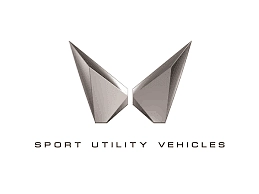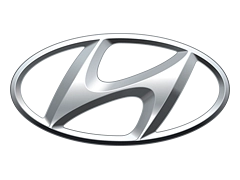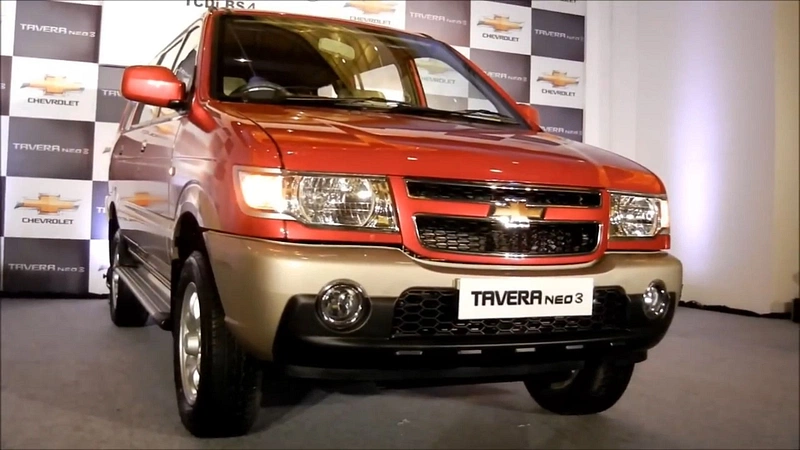
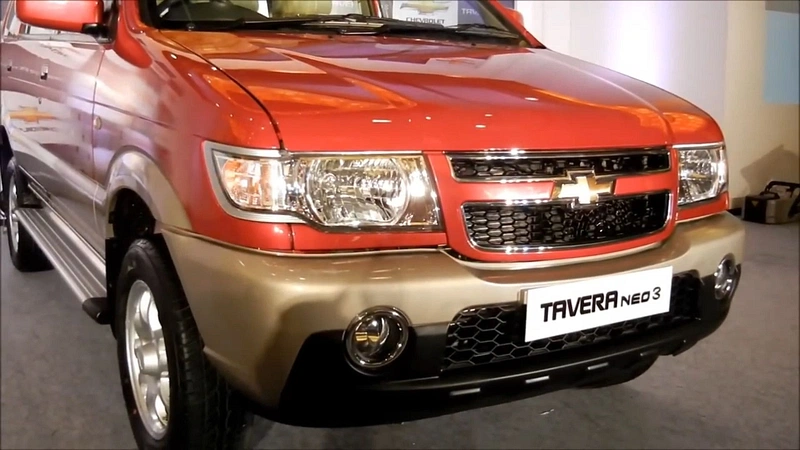
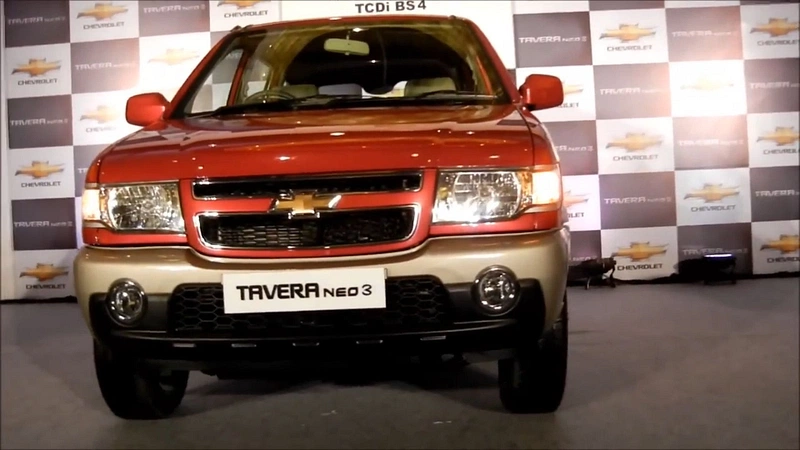
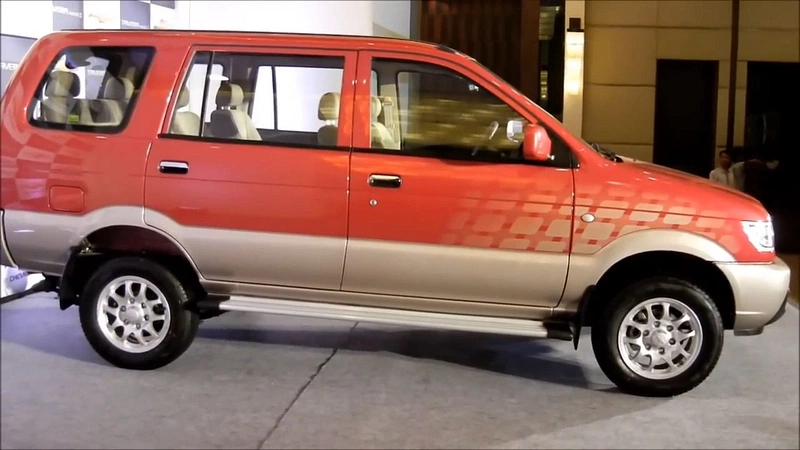



Chevrolet Tavera Neo

The Chevrolet Tavera Neo, a multi-utility vehicle (MUV) discontinued in India, remains a common sight in the used car market, particularly for fleet operators and large families. This review assesses its viability as a pre-owned purchase in 2025, focusing on its robust, body-on-frame construction, spacious interior, and workhorse diesel engine. Key considerations include the challenges of spare part availability due to Chevrolet's exit, potential maintenance issues, and the critical impact of the NCR 10/15-year vehicle ban.
Chevrolet Tavera Neo Variants & Prices
Filter By Fuel type & Transmission type| Variant Details | Ex-Showroom Price | |
|---|---|---|
Tavera Neo 3 6 Seats BSIIIBase Model2499 cc, Manual, Diesel, 14.8 kmpl | ₹ 6.83 Lakh* | |
Tavera Neo 3 7 Seats BSIII2499 cc, Manual, Diesel, 14.8 kmpl | ₹ 7.04 Lakh* | |
Tavera Neo LS B3 10 seats BSII2499 cc, Manual, Diesel, 14.8 kmpl | ₹ 7.28 Lakh* |
Chevrolet Tavera Neo Key Specs & Features
Chevrolet Tavera Neo Comparison with similar Cars
 |  | 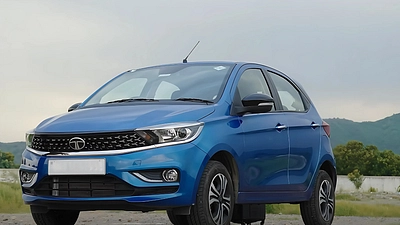 |  |  |  |  | 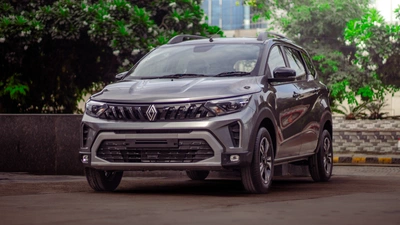 | 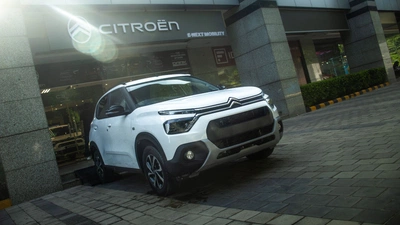 |
|---|---|---|---|---|---|---|---|---|
Overall Rating4.3 | Overall Rating4.5 | Overall Rating4.5 | Overall Rating4.4 | Overall Rating4.6 | Overall Rating4.4 | Overall Rating4.3 | Overall Rating4.3 | Overall Rating4.3 |
Transmissionmanual / automatic | Transmissionmanual / automatic | Transmissionmanual / automatic | Transmissionmanual / automatic | Transmissionmanual / automatic | Transmissionmanual / automatic | Transmissionmanual / automatic | Transmissionmanual / automatic | Transmissionmanual / automatic |
Engine998 cc | Engine1199 cc | Engine1199 cc | Engine1197 cc - 1493 cc | Engine1197 cc | Engine1197 cc | Engine999 cc | Engine999 cc | Engine1198 cc - 1199 cc |
Fuel Typepetrol / cng | Fuel Typepetrol / cng | Fuel Typepetrol / cng | Fuel Typepetrol / diesel | Fuel Typepetrol / cng | Fuel Typepetrol / cng | Fuel Typepetrol / cng | Fuel Typepetrol | Fuel Typepetrol / cng |
Power65.71bhp - 55.92bhp | Power87bhp | Power84.48bhp - 84.82bhp | Power81.8bhp - 114bhp | Power81.8bhp | Power82bhp | Power67.06bhp | Power71.01bhp@6250rpm | Power80.46bhp - 108bhp@5500rpm |
Torque89Nm - 82.1Nm | Torque115Nm | Torque113Nm | Torque115Nm - 250Nm | Torque113.8Nm | Torque113.8Nm | Torque91Nm | Torque96Nm@3500rpm | Torque115Nm - 205Nm@1750-2500rpm |
Mileage24.12 kmpl | Mileage20.09 kmpl - 18.8 kmpl | Mileage20.09 kmpl | Mileage18.4 kmpl | Mileage19.4 kmpl - 19.2 kmpl | Mileage18 kmpl - 16 kmpl | Mileage21.46 kmpl - 22.3 kmpl | Mileage- | Mileage19.3 kmpl |
Boot Space240 Litres | Boot Space366 Litres | Boot Space242 Litres | Boot Space385 Litres | Boot Space- | Boot Space260 Litres | Boot Space279 Litres | Boot Space84 Litres | Boot Space315 Litres |
Airbags2 | Airbags2 | Airbags2 | Airbags6 | Airbags6 | Airbags6 | Airbags2 | Airbags6 | Airbags2 - 6 |
Safety Rating- | Safety Rating5 | Safety Rating4 | Safety Rating- | Safety Rating- | Safety Rating- | Safety Rating- | Safety Rating- | Safety Rating- |
Ground Clearance- | Ground Clearance187 mm | Ground Clearance170 mm - 181 mm | Ground Clearance- | Ground Clearance- | Ground Clearance- | Ground Clearance184 mm | Ground Clearance- | Ground Clearance- |
Tyre Size145/80 R13 - 165/70 R14 | Tyre Size185/70 R15 - 195/60 R16 | Tyre Size155/80 R13 - 175/60 R15 | Tyre Size195/65 R15 - 215/60 R16 | Tyre Size165/70 R14 - 175/65 R15 | Tyre Size165/70 R14 - 175/60 R15 | Tyre Size165/70 | Tyre Size165/80 - 185/65 | Tyre Size195/65 R15 |
Read ReviewMaruti Suzuki S-Presso Review | Read ReviewTata Punch Review | Read ReviewTata Tiago Review | Read ReviewKia Sonet Review | Read ReviewHyundai Exter Review | Read ReviewHyundai Grand i10 Nios Review | Read ReviewRenault KWID Review | Read ReviewRenault Triber Review | Read ReviewCitroen C3 Review |
Pros & Cons of Chevrolet Tavera Neo
Things We Like
- Simple, utilitarian design makes it easy to maintain for experienced mechanics.
- Very low acquisition cost on the used market.
- Robust body-on-frame construction for durability. High seating capacity (7, 8, 9, or 10-seater options).
- Fuel-efficient diesel engine for economical running.
- Comfortable ride quality, especially over rough roads.
Things We Don't Like
- Dated interior and infotainment system.
- Severe challenge with genuine spare part availability and official service support due to brand discontinuation.
- Noticeable body roll and lack of handling precision.
- Low resale value due to brand exit and age.
- All diesel models are subject to or past the 10-year NCR vehicle ban.
- Basic safety features (often no airbags or ABS).
Chevrolet Tavera Neo Overview

The Chevrolet Tavera Neo, a popular multi-utility vehicle (MUV), was a staple in the Indian market for many years before its discontinuation around 2017, following General Motors' exit from India. This review focuses on the Tavera Neo from a 2025 used car buyer's perspective, particularly its later model years. The Tavera Neo was primarily known for its rugged, utilitarian nature, offering high seating capacity and a strong, reliable diesel engine. It was widely adopted by fleet operators, taxi services, and large families needing a no-frills, dependable people-mover.
As a used purchase, the Tavera Neo offers an extremely affordable entry point into the MUV segment. Its core strengths include its robust body-on-frame construction, which made it durable for rough Indian roads, its spacious cabin accommodating many passengers, and its fuel-efficient diesel engine. However, the significant downsides in 2025 are the severe challenges with spare part availability and service support due to Chevrolet's complete withdrawal from the Indian market. Furthermore, the NCR 10-year diesel and 15-year petrol vehicle ban critically impacts its usable life, especially for older diesel models which would now be well past their permissible age in the capital region.
engine and performance
The Chevrolet Tavera Neo was primarily powered by a robust diesel engine, which was central to its appeal as a workhorse MUV. The most common engine was a 2.5-litre Direct Injection Turbo Diesel unit, producing around 80 PS of power and 186 Nm of torque. In its later years, particularly for BS4 compliant cities, a 2.0-litre common-rail diesel engine (derived from Rover, manufactured by Sonalika) producing around 106.8 PS and 263.7 Nm of torque was also introduced. Both engines were paired with a 5-speed manual transmission.
The performance of the Tavera Neo was characterized by its strong low-end torque, making it highly tractable in city traffic and capable of hauling heavy loads or many passengers without feeling strained. While not designed for rapid acceleration (0-100 km/h times were often over 20 seconds for the 2.5L engine), it offered dependable and consistent power delivery. Fuel economy was a significant advantage, with the 2.5L diesel typically returning around 12-15 kmpl in real-world conditions, making it economical to run for its size. For a used purchase, meticulously check the engine for any unusual knocking or rattling noises, which could indicate issues with the direct injection system or valve train. Pay attention to excessive black smoke from the exhaust, which might point to injector problems or a clogged air filter. The clutch pedal should feel smooth and not excessively heavy or juddering, as clutch wear is common in MUVs used for heavy duty. Also, specifically for the 2.0-litre common-rail engine, check for any flat spots in acceleration between 2000-3000 rpm in third gear, a reported characteristic.
Ride and Handling
The Chevrolet Tavera Neo's ride and handling characteristics were primarily geared towards comfort and durability over varied Indian road conditions. Its robust body-on-frame construction, coupled with an independent double-wishbone front suspension and a semi-elliptical leaf spring rear suspension, was designed to absorb bumps and potholes effectively. This resulted in a relatively comfortable ride, especially for passengers in the middle and rear rows, making it suitable for long journeys on less-than-perfect highways.
Handling was predictable and stable in a straight line, particularly at moderate speeds. However, due to its tall body and soft suspension setup, there was noticeable body roll when cornering or during quick directional changes. The power steering, typically a recirculating ball type, was light enough for city maneuvering but lacked the precision and feedback of modern rack-and-pinion systems. Its turning radius was decent for an MUV of its size. For a used purchase, listen for any squeaking or groaning noises from the leaf springs at the rear, especially when going over bumps, which might indicate worn bushes or dry springs. Check for any excessive looseness or play in the steering, which could point to wear in the steering box or linkage. Also, pay attention to any uneven braking performance or a tendency for the vehicle to pull to one side, as the drum brakes at the rear can be prone to uneven wear.
interior
The interior of the Chevrolet Tavera Neo was designed with practicality and high seating capacity as its main objectives. It typically featured a dual-tone dashboard, often with hard-wearing plastics, reflecting its utilitarian purpose. The cabin was spacious, offering comfortable seating for 7, 8, 9, or even 10 passengers depending on the variant (with bench or captain seat configurations). The focus was on providing ample headroom and legroom across all rows, making it suitable for long journeys with a full complement of passengers.
Cargo space was decent, especially with the last row of seats folded or removed, allowing for substantial luggage or goods. Storage spaces within the cabin were basic but functional. When evaluating a used Tavera Neo, thoroughly inspect the seat upholstery and foam for excessive wear, tears, or compression, particularly in the middle and last rows, given its typical usage patterns. Test all power window switches and motors, as these can fail due to frequent use. Check the air conditioning system's effectiveness across all rows, as the rear AC vents (if present) might have issues. Listen for excessive rattles or squeaks from the dashboard and interior panels, which were common complaints in these vehicles, indicating loose fittings.
Infotainment
The infotainment system in the Chevrolet Tavera Neo was rudimentary, reflecting its positioning as a utilitarian MUV rather than a feature-rich family car. Most variants came with a basic 1-DIN or 2-DIN audio system. This typically included an AM/FM radio and a CD player.
Advanced connectivity options such as Aux-in, USB, or Bluetooth were either absent or limited to the very top-end variants in its later years. There were no integrated touchscreens, advanced smartphone integration features like Apple CarPlay or Android Auto, or factory-fitted navigation systems. The controls were primarily physical buttons and knobs, designed for simplicity and durability. The audio quality was functional for basic listening, but not a highlight. For a used purchase, it is crucial to verify the full functionality of the existing audio unit. Any major malfunction of the factory-fitted head unit might necessitate an aftermarket replacement, which could be a challenge given the vehicle's age and the limited availability of compatible parts.
exterior
The exterior design of the Chevrolet Tavera Neo, particularly its later iterations, maintained a functional and boxy MUV aesthetic. It wasn't designed to be flashy or stylish but rather to be robust and practical. It featured a prominent grille, large headlamps, and a tall, upright stance that emphasized its people-moving capabilities. The design was straightforward, prioritizing interior space and durability over aerodynamic sleekness.
When inspecting a used Tavera Neo, pay close attention to the door hinges and latches, as these can wear over time, leading to sagging doors or difficulty in closing, especially with heavy usage common in fleet vehicles. Also, check the rear tailgate mechanism for smooth operation, as it can become stiff or noisy. Look for any signs of uneven tire wear, which might indicate underlying suspension or alignment issues, a common concern in MUVs that carry heavy loads.
safety
Safety in the Chevrolet Tavera Neo was basic, adhering to the fundamental safety regulations prevalent in India during its production years. It was built on a body-on-frame chassis, which inherently offered a certain level of robustness. However, it lacked advanced safety features common in modern vehicles.
Standard safety equipment was minimal, often limited to basic seatbelts for all occupants and an engine immobilizer. Airbags and Anti-lock Braking System (ABS) were generally absent, even on higher variants, or only available on the very top-end models in its later years. It did not undergo independent crash testing by modern international standards like Global NCAP. For a used purchase, it is crucial to confirm if the specific variant you are considering has any safety features like ABS, as these were not universally available. Given the vehicle's age and design, its crashworthiness would be significantly lower than modern vehicles. Buyers should be aware that the Tavera Neo offers only rudimentary protection in the event of a collision.
competition
As a discontinued MUV from 2017, the Chevrolet Tavera Neo competes exclusively in the used car market in 2025. During its active sales period, its primary rivals included the Mahindra Bolero, Tata Sumo, and later, more refined options like the Maruti Suzuki Ertiga and Mahindra Xylo. In the current used market, it faces competition from older generations of these MUVs, as well as newer, more modern compact MUVs and even some entry-level SUVs that budget-conscious buyers might consider.
Compared to a used Mahindra Bolero, the Tavera Neo often offered a more comfortable ride and slightly better interior space, though the Bolero benefited from a more widespread service network and rugged image. Newer used MUVs like the Maruti Suzuki Ertiga or Toyota Rumion offer significantly more refinement, features, and better fuel efficiency, but the Tavera Neo's advantage lies in its much lower acquisition cost and higher seating flexibility in some variants. Its primary disadvantage in 2025 is the severe lack of official service and spare part availability, making it a challenging vehicle to maintain. The 10-year diesel vehicle ban in NCR further limits its appeal, especially for models that are already well past their prime.
final verdict
The Chevrolet Tavera Neo, as a used car in 2025, is a proposition primarily for buyers with extremely tight budgets who prioritize high seating capacity and a robust, no-frills vehicle for heavy-duty use. Its body-on-frame construction, spacious interior, and economical diesel engine made it a reliable workhorse in its prime. For fleet operators or large families outside of major metropolitan areas with access to independent mechanics familiar with older GM/Isuzu platforms, it can still offer basic transportation at a very low cost.
However, the decision to purchase a used Tavera Neo comes with significant caveats. The most critical challenge is the severe scarcity of genuine spare parts and the complete absence of official service support due to Chevrolet's exit from India. This means repairs can be difficult, time-consuming, and expensive, often relying on aftermarket or salvaged parts. Furthermore, all diesel Tavera Neo models from its production era are now well past the 10-year mark, making them illegal to operate in the NCR region and significantly impacting their resale value and usable life in other major cities with similar regulations. The Tavera Neo is a choice only for those fully aware of these substantial risks and prepared for potentially complex maintenance.
Chevrolet Tavera Neo Specifications & Features
Engine Specifications
| Engine Type | In-Line Engine |
| Displacement | 2499 cc |
| Max Power | 80 @ 3,900 (PS@rpm) |
| Max Torque | 19 @ 1,800 (kgm@rpm) |
| No of Cylinders | 4 |
| Transmission Type | Manual |
| Gearbox | 5 Speed |
| Drive Type | 2WD |
| Engine Displacement | 2499 cc |
| Top Speed | 138 kmph |
Performance Specifications
| Acceleration | 22 |
Fuel Specifications
| Fuel Type | Diesel |
| Emission Norm Compliance | Bharat Stage III |
| Fuel Tank Capacity | 55 Litres |
| City Mileage | 11.5 kmpl |
| Diesel Mileage ARAI | 14.8 kmpl |
| Diesel Fuel Tank Capacity | 55 Litres |
| Emission Control System | Catalytic Converter |
Wheels & Tires
| Wheel Covers | |
| Alloy Wheels | |
| Tyre Size | 205/65 R15 |
| Tyre Type | Tubeless,Radial |
| Wheel Size | 15 x 6 J Inch |
| Front Track | 1445 mm |
| Rear Track | 1420 mm |
| Alloy Wheel Size | 15 Inch |
Suspension, Brakes & Steering
| Front Suspension | Independent Double Wishbone, Torsion Bar |
| Rear Suspension | Spring & Anti-roll Bar Semi-elliptical Leaf Spring |
| Steering Type | Power |
| Steering Column | Telescopic |
| Turning Radius | 6 m |
| Front Brake Type | Ventilated Disc |
| Rear Brake Type | Drum |
| Steering Gear Type | Recirculating Ball Steering |
Safety Features
| Parking Sensors | |
| Anti Lock Braking System Abs | |
| Central Locking | |
| Anti Theft Alarm | |
| Driver Airbag | |
| Passenger Airbag | |
| Side Airbag | |
| Side Airbag Rear | |
| Day Night Rear View Mirror | |
| Seat Belt Warning | |
| Door Ajar Warning | |
| Engine Immobilizer | |
| Tyre Pressure Monitoring System Tpms | |
| Child Safety Locks | |
| Brake Assist | |
| Fog Lights Front | |
| Fog Lights Rear | |
| Power Door Locks | |
| Rear Seat Belts | |
| Side Impact Beams | |
| Front Impact Beams |
Interior Specifications
| Seating Capacity | 7 |
| No of Doors | 5 |
Interior Features
| Tachometer | |
| Leather Wrapped Steering Wheel | |
| Digital Clock | |
| Fabric Upholstery | |
| Electronic Multi Tripmeter |
Comfort & Convenience
| Power Steering | |
| Air Conditioner | |
| Heater | |
| Adjustable Steering | |
| Automatic Climate Control | |
| Accessory Power Outlet | |
| Trunk Light | |
| Vanity Mirror | |
| Rear Reading Lamp | |
| Rear AC Vents | |
| Cruise Control | |
| Keyless Entry | |
| Glove Box | |
| Adjustable Headlamps | |
| Power Windows Front | |
| Rear Seat Headrest | |
| Rear Seat Centre Arm Rest | |
| Height Adjustable Front Seat Belts | |
| Air Quality Control | |
| Remote Trunk Opener | |
| Remote Fuel Lid Opener | |
| Low Fuel Warning Light | |
| Rain Sensing Wiper | |
| Lumbar Support | |
| Cigarette Lighter | |
| Side Stepper | |
| Leather Seats | |
| Outside Temperature Display | |
| Adjustable Seats | |
| Vehicle Stability Control System | |
| Crash Sensor | |
| Centrally Mounted Fuel Tank |
Infotainment Features
| Radio | |
| Integrated Antenna | |
| Digital Odometer | |
| Power Antenna | |
| Audio System Remote Control |


